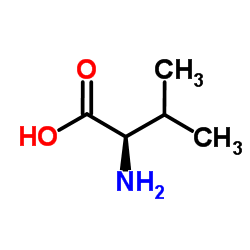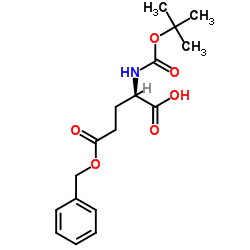6893-26-1
| Name | D-glutamic acid |
|---|---|
| Synonyms |
H-D-Glu-OH
Glutamic acid, D- MFCD00063112 D(-)-Glutamic acid glutamic acid D-form EINECS 230-000-8 δ-Glutamic acid hydrogen D-glutamate d-Glu (R)-(-)-GLUTAMIC ACID R-(-)-Glutamic acid (2R)-2-aminopentanedioic acid D-Glutamic acid D(-)-Glutamicacid |
| Description | D-glutamic acid, an enantiomer of L- glutamic acid, is widely used in pharmaceuticals and foods. |
|---|---|
| Related Catalog | |
| In Vitro | Various d-amino acids, such as D-serine, D-aspartic acid (D-Asp), and D-glutamic acid (D-Glu) are widely found in mammals including human beings and they are now thought to be the candidates of novel physiologically active substances and/or biomarkers[1]. D-[Asp/Glu] (4 mg/mL) inhibits IgE binding (75%) to peanuts while D-Glu, D-Asp has no inhibitory effect. IgE is specific for D-[Asp/Glu] and may have the potential for removing IgE or reducing IgE binding to peanut allergens[2]. |
| In Vivo | D-glutamic acid is currently paid attention as a modulator of neuronal transmission and hormonal secretion. It is metabolized only by D-aspartate oxidase in mammals[1]. After intraperitoneal injection, L-glutamate is catabolized via a-ketoglutarate, whereas D-glutamate is converted to n-pyrrolidone carboxylic acid. Carbon 2 of both D- and L-glutamate is converted in the cecum to the methyl carbon of acetate. Both rat liver and kidney catalyze the conversion of D-glutamic acid to n-pyrrolidone carboxylic acid[3]. |
| Animal Admin | Rats: Male albino rats are given injections of L- or D-glutamic acid-2-C14, DL-glutamic acid-5-C14, or D-glutamic acid-5-C14. Injections by stomach tube or into the cecum are performed while the animals are under ether anesthesia. After the rats are killed, the “carcass” and liver glutamic acids are isolated, degraded, and assayed for radioactivity. “Carcass” refers to the entire animal, except liver, including the ished gastrointestinal tract[3]. |
| References |
| Density | 1.4±0.1 g/cm3 |
|---|---|
| Boiling Point | 333.8±32.0 °C at 760 mmHg |
| Melting Point | 200-202ºC |
| Molecular Formula | C5H9NO4 |
| Molecular Weight | 147.129 |
| Flash Point | 155.7±25.1 °C |
| Exact Mass | 147.053162 |
| PSA | 100.62000 |
| LogP | -1.43 |
| Vapour Pressure | 0.0±1.5 mmHg at 25°C |
| Index of Refraction | 1.522 |
| Personal Protective Equipment | Eyeshields;Gloves;type N95 (US);type P1 (EN143) respirator filter |
|---|---|
| Hazard Codes | Xi |
| Risk Phrases | R36/37/38 |
| Safety Phrases | S24/25 |
| RIDADR | NONH for all modes of transport |
| WGK Germany | 3 |
| HS Code | 2918990090 |
| Precursor 10 | |
|---|---|
| DownStream 10 | |
| HS Code | 2922499990 |
|---|---|
| Summary | HS:2922499990 other amino-acids, other than those containing more than one kind of oxygen function, and their esters; salts thereof VAT:17.0% Tax rebate rate:9.0% Supervision conditions:AB(certificate of inspection for goods inward,certificate of inspection for goods outward) MFN tariff:6.5% General tariff:30.0% |





















